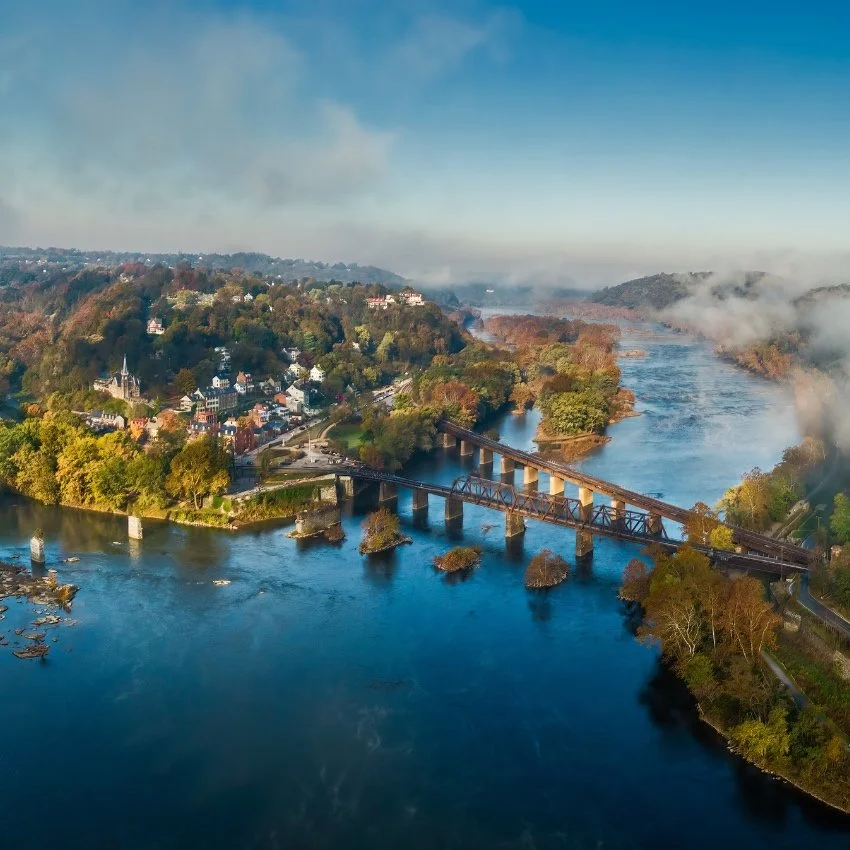To protect clean water, we need to talk about the Potomac’s English ivy problem
/We chatted with Jon Nowick of Tree Friends United about how to get invasive vines under control
Photo credit: CANVA
It may come as a shock to learn how many common plants—even some beloved ones—are invasive species capable of wreaking havoc on our local ecosystems. Because the Potomac River can only be as healthy as the lands around it, it’s imperative that residents of the region do their part to keep damaging plant species in check.
Let’s zoom in on a traditional ornamental plant that quickly spreads from yards into wild areas, posing serious threats to essential tree species.
English ivy: How it got here, how it spreads, and how it harms us
Brought to the US by European colonists in the early 1700s, English ivy was a popular inclusion in gardens thanks to its low-maintenance, year-round greenery. Centuries later, it’s a naturalized species in 18 states and remains a go-to for homeowners despite its invasive plant status. Its vines quickly spread along the ground and vertically up walls, trees, and cliffs—sometimes as high as 90 feet.
Ivy’s impact on our environment
After climbing a tree’s trunk, English ivy engulfs branches and twigs, covering leaves and impeding photosynthesis. Branches weaken from this lack of nutrition and the weight of vines, making them more susceptible to winds, snow, and storms. Invasive vines stifle the growth of locally-evolved plants from forest floors up to canopies, which can shift wild spaces into monocultures incapable of supporting the diverse creatures who call our region home.
Riparian buffer. photo credit: canva.
Does this affect the Potomac River?
Unfortunately, yes. English ivy and other invasive plants can thin riparian buffers and contribute to deforestation by weakening and killing trees. This leaves our natural water defenses threatened, increasing the likelihood that urban runoff will reach our rivers and streams. And since the Potomac provides drinking water for over 5 million of us, the stakes for keeping riparian buffers healthy and invasive plants out of our ecosystem couldn’t be higher.
So, how do we root out invasive plants?
The good news is that we can all help to eradicate troublesome vines and defend native trees. We asked Jon Nowick of Tree Friends United to share his top tips for concerned landowners and nature enjoyers:
1. Control invasive vines: Nowick advised swift and thorough removal of invasive vines like English ivy because “when left unchecked, they can overwhelm and destroy your trees and spread to your neighbors’ and public land.” Extricating vines can be tricky, so take a moment to review recommended practices before you set out. You can also report invasive plant sightings here.
2. Maintain existing trees: “Some trees or branches may need to be removed when they threaten the safety of a house or other property. But preserving those trees you have—especially mature trees—is key.”
homeowners planting ground cover can choose native species like golden ragwort instead of english ivy. photo credit: canva.
3. Plant native: Nowick stressed the importance of “enriching your environment with new locally-evolved trees. Some places, like Maryland’s Montgomery County, even offer free trees." We’re proud to host the Safe Water Conservation Collaborative and their free riparian buffer plantings for residents of West Virginia. Need tips on what to plant? Check out these great resources from the National Wildlife Federation and Virginia’s Department of Conservation and Recreation.
4. Help us protect future generations of trees from invasive species and other threats! Tomorrow’s Trees monitors forest populations by collecting acorns and seeds for plantings. Our people-powered movement to protect native forests and support healthy rivers needs helping hands!
















